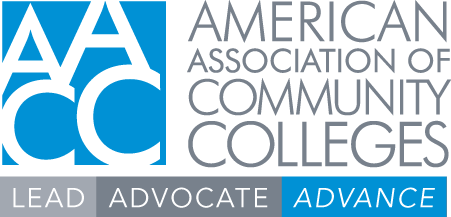The VFA in General
More than 60 community college leaders guided the 18-month development of the VFA framework resulting in the release of more appropriate measures. The VFA gauges student progress and outcomes including pre-collegiate preparation (such as developmental education and Adult Basic Education), academic progress and momentum points, completion and transfer measures, and workforce outcomes for career and technical education.
Q. How do I submit questions or give feedback on the VFA?
State Participation
Q. Why is there an annual fee to participate in the VFA at the state level?
Participation
Q. Why participate in the VFA?
The VFA is the foundational accountability framework for our colleges for now and into the future and it gives community colleges what has long been lacking in reporting outcomes to the public and policymakers: specific metrics that assess how they do in areas such as student progress and achievement and career and technical education programs (credit and noncredit).
The data collected and shared is specific to community colleges and focused on telling internal and external audiences what they need to know to shape improvement strategies and provide resources. With better, more appropriate measures, our colleges can use the VFA for reporting to boards and local, state, and regional stakeholders; responding to calls for performance funding; shaping policy and advocacy; improving practices; identifying institutional effectiveness; and benchmarking to peer colleges.
Also, the VFA Data Tool has the potential to streamline accountability reporting and improve transparency. It enables the colleges to do more, systematically, with data than ever before. The tool gives colleges and IR staff methodologies and processes for data collection, in addition to an easy way to display and benchmark the data. The intention is to ease the burden on IR staff and, as community colleges and state systems adopt the VFA, leverage the data for multiple purposes (internal improvement, as well as external accountability) to further mitigate the burden on overly-taxed IR offices. There is enormous potential for the VFA to be the framework that satisfies a variety of reporting requirements and simplifies the work of institutional researchers, accountability and effectiveness professionals, and presidents.
The more colleges that join, the greater our voice will be.
Q. How do I participate in the VFA?
All community colleges that are AACC members are eligible to participate in the VFA.
Activation is done on the VFA web site in the "Participation" section. During activation, a college will choose its tier of participation and walk through a simple process so that AACC can collect your VFA Key Contact and set-up access to your VFA account. Following activation, the Key Contact will receive detailed instructions on logging into the college's VFA account and the data collection process. For now, please fill out this very brief form and we will add you as a contact to be sent information about the VFA and activation.
To note, all VFA memberships begin on January 1 (or whenever your participation election date is) and end on December 31 of the respective collection year (regardless of participation election date) .
Q. Which community colleges can participate in the VFA?
Q. When can colleges sign up to participate in the VFA?
Participation is rolling but all colleges are expected to meet the data submission deadline regardless of when they activate their participation.
Q. When is the VFA Participation Year and the Data Collection Cycle?
Q. What is required to participate in the VFA?
The Key Contact is responsible for maintaining the VFA College profile and for assigning user roles to people at their college.
Q. Are AACC membership dues the same as VFA participation dues?
Q. Can my district, system office, association, commission, or state office participate in the VFA?
Measures
Q. What are the measures in the VFA?
- Developmental Progress Education Measures: percent of students who progress through developmental education and into college-level work
- Two-Year Progress and Outcomes Measures: percent of students who reach two-year progress points and outcomes including retention, credit thresholds, earning a credential, transferring and still enrolled
- Six-Year Outcomes Measures: percent of students that achieve one of the 9 outcomes including earning a certificate, associates or bachelor’s degree; transfer; still enrolled; left institution with less/more than 30 credits
- Percent of students that obtain CTE and achieve outcomes such as earning a certificate or credential, passing a licensure exam, gaining employment and realizing a wage gain.
Adult Basic Education (ABE)
- Percent of students that complete ABE, and progress into employment or college education
The VFA measures are listed in the VFA Snapshot and described in detail in the VFA Metrics Manual.
Q. What are the cohorts and timeframes in the VFA?
- Six-Year Timeframe: students who entered the institution six years ago
- Two-Year Timeframe: students who entered the institution two years ago
Each of these cohort years are broken into three cohort types:
- Main VFA Cohort: fall entering students that are first-time at the reporting college
- Credential Seeking: fall entering students that are – by their behavior – intending to earn a credential
- First Time In College: fall entering students that are first time in college
In addition to the SPO measures, colleges report separate cohorts for Career & Technical Education (CTE) and Adult Basic Education (ABE).
The VFA cohorts are described in detail in the VFA Brochure and the VFA Metrics Manual.
Q. How were the measures in the VFA developed?
The VFA measures were developed through 18 months of intensive research and testing by community college presidents, institutional researchers, and trustees/governing boards that know data and understand our institutions and students. Managed by AACC and under the guidance of a steering committee, four working groups defined the VFA measures, which were then pilot tested by nearly 60 community colleges.
The VFA measures are described in detail in the VFA Brochure and the VFA Metrics Manual.
Q. Will VFA members be required to enter all the data in the VFA?
Q. What's the difference between "credits earned" and "successfully completed"?
Credits Earned: These earned credits (or credits equivalents for developmental education courses that are converted to credit equivalents) are inclusive of any credits of which the institution is aware and are counted according to institutional practice, regardless of the grade awarded. This is regardless of when or where the credits were earned, and regardless of the grade awarded. (e.g., credits earned while in high school, from AP exams, developmental education courses; awarded by your college or another college)
Measures used:
- Credential Seeking Cohort
- Two-Year Progress: Reaching Credit Thresholds
- Six-Year Outcomes: left institution with less than, or equal to/greater than, 30 credits
Credits Successfully Completed: For credits to count as “successfully” completed, a student must earn a “C” or better, or a “passing” grade for courses without letter grades. Please note, any “C” grade (“C+”, “C”, or “C-”) is considered a “C” grade for VFA calculation.
Measures used:
- Developmental Education Progress: Completed Highest Dev, Completed College Course
- Two-Year Progress: Credit Hour Success Rate (First Term / Year Two)
Q. When will VFA data be available?
After data collection closes, all college's VFA Public Reports will be available on their College Profile page. Visit the Find VFA Colleges page to search for VFA colleges and view their VFA Public Report. Benchmarking dashboards will not be available to the public but will be useable by participating colleges.
Q. What VFA data are visible to the public?
Once a college finalizes, approves, and publishes its VFA data, the data are then in a Published state. The college’s published VFA Public Outcomes Report is published to their VFA College Profile and can be viewed by the public. The public will only be able to see the most recent year’s published data. The Benchmarking Dashboard and the underlying data in the data input portal is only available to the member college.
Data Input
Q. How will VFA data be collected and reported?
From the data entered, the VFA Data Tool will create data dashboards and reports showing the outcomes visually – as bar charts, tables, pie charts, etc. The public can view a college’s VFA Public Outcomes Report once the college approves its data for publishing on the VFA website. Colleges will have the ability to preview the report before it is approved for publishing on the VFA website.
Starting in November, each college will sign up for VFA participation. Data entry opens in March and continues until the specified due date. Using the specifications detailed in the VFA Metrics Manual and/or Raw Upload Guide, colleges will determine and input/upload their VFA data to the VFA online data collection and display tool.
Q. When can colleges begin to upload or enter their VFA data?
Visit the Data Collection Schedule page for the current year's deadilnes.
Q. How do I navigate to the data input portal?
You begin data entry through the “My Account” page.
- From the VFA home page, log in using the hyperlink on the upper, right-hand side of page.
- Once you are logged in (your name will show), click “My VFA” from the navigation menus or below your name.
- From the “My VFA” page, click on the center, “Input VFA Data” bar.
Q. Who can enter VFA data and what are the VFA roles?
- The Key Contact has all rights for data submission as well as duties to manage the VFA account. S/he is able to assign roles to other users as well as view, enter, review, submit, and approve data for publishing. There is only one Key Contact per college
- Data Administrators have all rights except the right to assign roles. Data administrators can view, enter, review, submit, and approve data for publishing.
- Data Inputters have all rights except the rights to assign roles and approve data for publishing. Data inputters can view, enter, review, and submit data.
Q. How do you know who at your college has a VFA role?
Dashboards & Exports
Q. How will VFA data and outcomes be displayed?
Note: Only the VFA Tier 2 participants have access to the Benchmarking Dashboard, which enables a college to compare its outcomes data to that of peer colleges.
Q. How do I see my college's disaggregated data?
Please note: Disaggregated data are not made available to the public.
Q. Are all colleges included in the Comparison report, or just colleges who reported VFA data?
The Comparison of the College's IPEDS (Federal) Graduation Rate to the College's VFA Six-Year Outcomes report compares IPEDS data of VFA colleges to the VFA Six-Year Outcomes of VFA colleges.
The first page is your college’s IPEDS data vs. your college’s VFA data and the second page is All VFA Colleges’ IPEDS data vs. All VFA Colleges’ VFA data. Non-VFA colleges are not included in either report.

